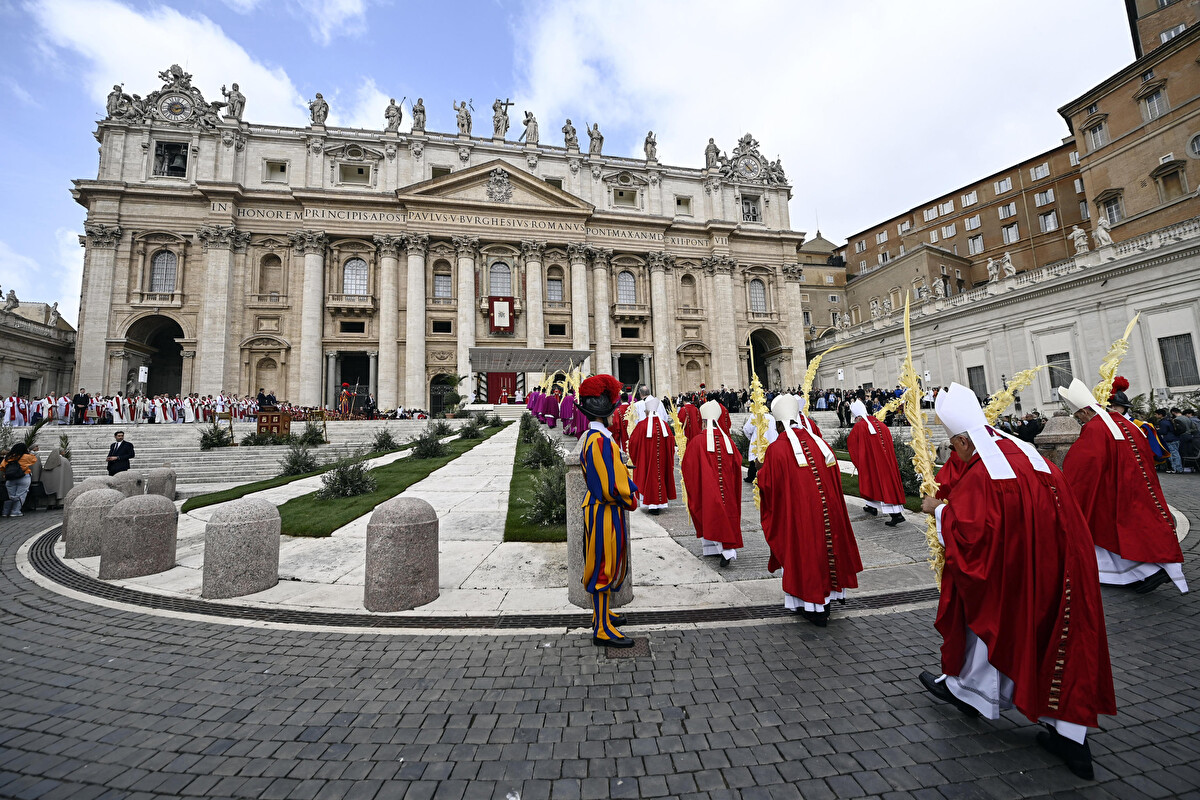Everything is ready in the Vatican for the Conclave that will lead to the election of Pope Francis’ successor: from the activation of the security apparatus to the enforcement of secrecy measures to ensure that the cardinals’ vote, held in the Sistine Chapel, takes place in absolute confidentiality.
Starting from 3:00 p.m. on May 7, when the Conclave begins, all mobile telecommunication signal transmission systems within Vatican City (excluding the Castel Gandolfo area) will be deactivated. The signal will be restored only after the announcement of the new Pope. All cardinal electors will be required to leave their mobile phones in their rooms at the Casa Santa Marta, where they will be staying during the Conclave.
The red drapery has already been placed on the central loggia of St. Peter’s Basilica, which will serve as the backdrop for the announcement of the new Pope, his first words, and the Urbi et Orbi blessing.
Meanwhile, social media is abuzz with predictions and satire about the new Pope, especially following the AI-generated image depicting Trump as the new pontiff. According to the monitoring platform Visibrain, over 1.3 million posts about the Conclave have been published on X, and TikTok videos on the topic have been viewed over 363 million times, showing an unprecedented level of engagement among younger audiences. The “FantaPope” game has also launched, modeled after fantasy football, allowing users to select their preferred cardinals and make predictions about the next Pontiff.
During the final general congregation of cardinals in the Vatican—the twelfth—tradition was followed: the Fisherman’s Ring was annulled and the papal seals of Pope Francis’ pontificate were broken, with a cross engraved over the symbol. The Fisherman’s Ring is destroyed upon the death of a Pope. Each Pontiff has a personal ring, worn on the ring finger of the right hand. A new papacy officially begins when the elected Pope dons his own ring during the inauguration Mass.
The ring is one of the Church’s most symbolically significant objects, representing the Pope’s role as the “fisher of men,” the successor to the apostles.
Meanwhile, the cardinals gathered in Rome have issued a call for peace and for the protection of civilians affected by war. In a document released today, they wrote: “We, the Cardinals of the Holy Roman Church, regretfully note the lack of progress in peace processes in Ukraine, the Middle East, and many other parts of the world. On the contrary, attacks—especially those affecting civilian populations—have intensified. We issue a heartfelt appeal to all involved parties to reach a permanent ceasefire as soon as possible and negotiate, without preconditions or further delays, the long-desired peace sought by the affected populations and by the world.”
In the last congregation, attended by 173 cardinals, 130 of whom are electors, there were 26 interventions, according to the Director of the Holy See Press Office, Matteo Bruni. Topics included “the reforms of Pope Francis that need to be continued in the future, such as legislation on abuse, the economy, the Curia, synodality, peace, and care for creation.”
There was also discussion about communion as a calling for the new Pope—someone who can be a Pontifex, a builder of bridges in society, a pastor, a builder of humanity, and the face of a Samaritan Church, especially in times of war, violence, and deep polarization. According to Bruni, “there was a call for a Pope of mercy, synodality, and hope.” Other topics reportedly included canon law, the Pope’s authority, global divisions, and the role of cardinals within the Church.
Is this a sign that the cardinals intend to elect a successor in the same mold as Francis? The cardinals seem to have increased the level of confidentiality, with many avoiding the large number of journalists gathered in St. Peter’s Square. However, Cardinal Ignatius Suharyo Hardjoatmodjo of Indonesia did comment briefly on the proceedings of the general congregations, saying: “The meetings are going well. How long will we be in the Sistine Chapel? I think 2–3 days.” Meanwhile, the Archbishop of Dili (Timor-Leste), Virgilio do Carmo da Silva, denied that a shortlist of names had already been drawn up, stating: “Not yet—maybe starting tomorrow,” and adding, “We’re listening to situations from all parts of the Church worldwide.”
On the horizon, however, a new controversy appears to be brewing among the cardinals. According to the “Daily Nation,” Cardinal and Archbishop of Kenya John Njue claimed he “was not invited.” Njue gained media attention for having changed his birth year in the Pontifical Yearbook 2024, from a general 1944 to a more specific January 1, 1946—allowing him to remain under the cutoff age of 80 for cardinal electors. It had been said that he declined to come to Rome for health reasons—but today he has denied that.












